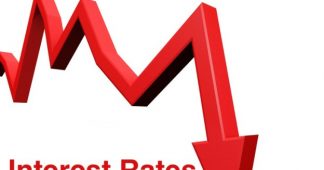October 16, 2017
The title of this week’s commentary is the title of an FT article published at the end of last week as monetary authorities gather in Washington for the annual meetings of the IMF and World bank. It would appear that the mood is somewhat subdued…central bankers are puzzled as to why inflation is not rising as much as their models suggest. To quote the FT;
“As they gather in Washington for the annual meetings of the International Monetary Fund, there is a crisis of confidence in central banking. Their economic models are failing and there are doubts whether they understand the effects of interest rates and other monetary policies on the economy…In short, the new masters of the universe might not understand what makes a modern economy tick and their well-intentioned actions will prove harmful.”
Link to article here.
What we find even more amazing is that despite their growing lack of faith in their models (models that the FT describes as fiendishly complicated), some central bankers still believe that forward guidance (aka simple jawboning) is an effective policy tool even when they are worried that their fiendishly complicated models are not up to scratch. Let’s just say we’re sceptical on this front. In fact, we’re pretty sceptical whenever a central banker speaks nowadays, as they are often self-serving, duplicitous and completely ignorant of the unintended consequences which we truly believe are yet to be seen from their audacious monetary policy experiments of the last decade.
A number of central bankers were either speaking publicly or being interviewed by the media in Washington. Outgoing Fed vice chair Fischer said the US has room for more investment and consumption. Dallas Fed president Kaplan said that business activity was strong and the consumer was in good shape. St Louis Fed president Bullard said financial market risks not extraordinarily high at the moment…to cherry pick just a few. These comments, along with some other research on the looming pensions crisis (ie tens of trillions of dollars in off balance sheet liabilities waiting to hit in the coming decades) prompted us to do a little digging around in the US national accounts.
We continue to think that imminent (next two or three quarters) risks of recession are low (famous last words!), but we are see the current economic performance as very sub-par. We also worry about the quality of growth and the inequality that seems to worsen on a monthly basis. On the surface, the consumer is spending a lot. The first chart below shows consumption and household savings as a per cent of GDP. Between 1950s and the early 1980s, consumption was fairly steady around 59% to 62% of GDP, since which time it has steadily increased to the current level near 70%. So if record consumption is indicative of a consumer in good shape, then Fed president Kaplan is correct. It is also possible that the share of consumption continues to increase, in which case vice chair Fischer is correct. But is this good economic management?
Chart 1 – Consumption as a share of GDP

What should also be clear is that the increase in the share of consumption coincided with a marked decline in the savings of households. But what of the post GFC period? The share of consumption has continued to increase even as household savings have increased. Well, perhaps the answer lies in the continue rise in consumer credit. Chart two shows that consumer credit as a share of GDP continues to rise pretty relentlessly. Student debt and auto loans have been rising strongly during the post crisis period, and although this adds to GDP in the short term, too much debt could prove problematic at some point in the future, for example in the next recession.
Chart 2 – Consumer credit as a % of GDP

A huge amount of research has shown the growing inequality in the US, with the spoils on both income and asset wealth accruing to the top few per cent whilst the remaining 90% or so are either worse off, or just about managing (chart 3 below). The relentless rise in consumer credit could be indicative of the lowest 90% borrowing to consume today in the hope that greater income in the future will help them reduce their debts.
Chart 3 – Wealth shares by percentile 1989 to 2016

Whilst this is entirely possible, who is going to fund the increase in future incomes? Basically, there are two potential sources. First, the Government could choose to increase both the salaries that they pay their workers…they could also choose to increase benefit payments. However, Government finances are already deteriorating and simply put, the Government is in no position to fund a sustainable increase in consumer’s incomes. We will return to the subject of Government finances soon as this is a major long term problem as unfunded off balance sheet liabilities come due in the years ahead.
Second, private sector companies could pay their workers more. Well, the evidence suggests that the incentive structure that corporate America has built for itself strongly favours capital over labour. The chart below shows the share of GDP going to purely employee compensation, both wages & salaries only, and total compensation including pension and social security contributions.
Chart 4 – Labour compensation as a % of GDP

Rather than reward workers, executives are rewarding shareholders…and themselves. And here is what is wrong with the incentive structure for American executives. Because they receive the vast majority of their compensation from share options, executives are much more focused on pushing the share price up than with the long term welfare of all stakeholders. Not only are they spending less on traditional capex (i.e. plant and equipment) even though borrowing costs are near 5000 year lows and profit margins are high (see chart 5), they have been running deficits (i.e. borrowing money) to cover both capex and share buybacks – see chart 6.
Chart 5 – Business spending on new plant and equipment as a % of GDP

Indeed, the last two times the corporate sector was bingeing to the same degree, the economy was on the verge of a recession.
Chart 6 – Corporate America spending more than it is taking in

So here we have the vast majority of consumers just about managing and in some cases stretching themselves through increased borrowing in order to carry on consuming so that GDP grows. Corporate America is choosing to leverage their balance sheets in order to boost share prices (and executive compensation), rather than increase salaries and invest for future growth. On the current course, we cannot see how these two trends continue. Surely it is a question of time until something breaks.
Of course, the theory of Trump’s tax plan is that corporate America will take the funds available from repatriation and lower tax rates, and use the cash to create jobs. Well, unless the tax code changes the incentive structure of executives away from share buy backs, we doubt very much that this so-called trickle down policy will work. The Bush tax cuts hardly helped in this regard, and corporate America has hardly shared the benefits of paying lower effective tax rates in recent years – tax paid is at the low end of historical ranges as seen in the chart below.
Chart 7 – US Non financial corporate taxes paid

So here is our problem. We can identify a number of imbalances in the system, but until something changes, these imbalances can remain and even become more extreme. Central bankers remain wedded to models that don’t seem to work, and their policies are allowing many imbalances to build to unprecedented levels. Policymakers want us to focus on the shiny veneer that they have created for both the economy and financial markets, and yet they risk creating a system that is arguably more vulnerable than ever before.
The financial markets currently are much more focused on the shiny veneer. Equity markets are simply not suffering any downside price action to speak of and volatility is essentially at record low levels. This seems dichotomous with the vulnerabilities in the real economy. We believe that without real change in the way the economy is managed and the way monetary policy is conducted, the system will breakdown at some point.
If policymakers get ahead of the curve, and start implementing wide ranging reforms, then the process of tackling the real problems will be a lot less painful. If, however, we remain on the currency policy setting, we fear that we are headed for a great reset that will be painful for the vast majority. At the moment, policymakers are still wedded to their models which even they worry are broken. As a result, we fear that we will have to endure a great reset.
The timing of such a reset remains as elusive as ever, and with centrals bankers still trying to inflate everything, it is possible that the reset is years away. However, markets have a history of sucking in the vast majority of players just before the turning point. Anecdotal evidence suggests that in the big picture, more and more investors are getting swept up every month by the most hated bull market in history. All we can say is that the higher the market goes without an underlying improvement in the health of the broad economy, the worse the next bear market will be.
Stewart Richardson
RMG Wealth Management
Published at https://www.marketviews.com/rmg/central-bankers-face-a-crisis-of-confidence-as-models-fail-ft-article/











